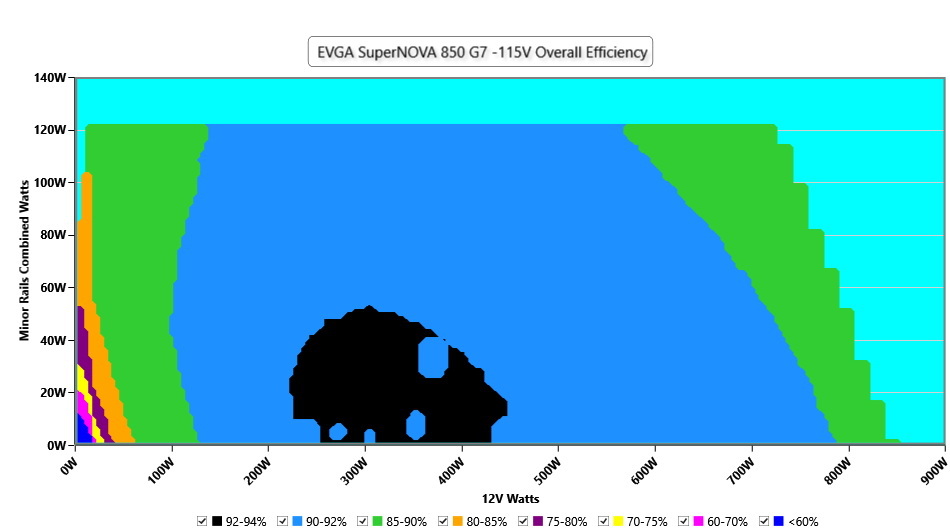Why you can trust Tom's Hardware
Protection Features
Check out our PSUs 101 article to learn more about PSU protection features.
| OCP (Cold @ 31°C) | 12V: 101.2A (142.97%), 12.160V 5V: 30.7A (127.92%), 5.101V 3.3V: 29.1A (121.25%), 3.367V 5VSB: 4.3A (143.33%), 4.978V |
| OCP (Hot @ 46°C) | 12V: 98.2A (138.71%), 12.179V 5V: 28.3A (117.92%), 5.106V 3.3V: 29A (120.83%), 3.369V 5VSB: 4.3A (143.33%), 4.983V |
| OPP (Cold @ 33°C) | 1230.95W (144.82%) |
| OPP (Hot @ 43°C) | 1196.11W (140.72%) |
| OTP | ✓ (142°C @ 12V Secondary Side) |
| SCP | 12V to Earth: ✓ 5V to Earth: ✓ 3.3V to Earth: ✓ 5VSB to Earth: ✓ -12V to Earth: ✓ |
| PWR_OK | Proper Operation |
| NLO | ✓ |
| SIP | Surge: MOV Inrush: NTC Thermistor & Bypass Relay |
OCP at 12V and OPP are highly set, most likely to cope with power spikes. That is not the best way to do it since it makes the PSU's protection features less effective. On the minor rails, the OCP triggering points are correctly set.
DC Power Sequencing
According to Intel’s most recent Power Supply Design Guide (revision 1.4), the +12V and 5V outputs must be equal to or greater than the 3.3V rail at all times. Unfortunately, Intel doesn't mention why it is so important to always keep the 3.3V rail's voltage lower than the levels of the other two outputs.
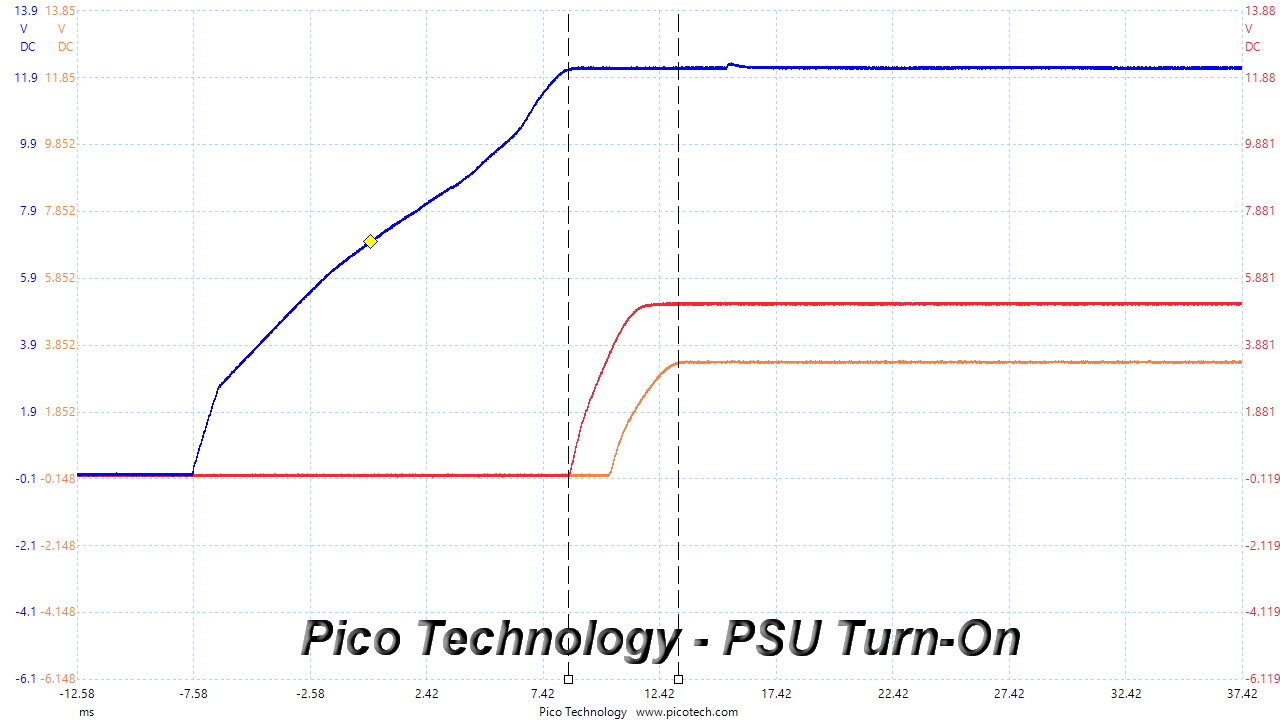

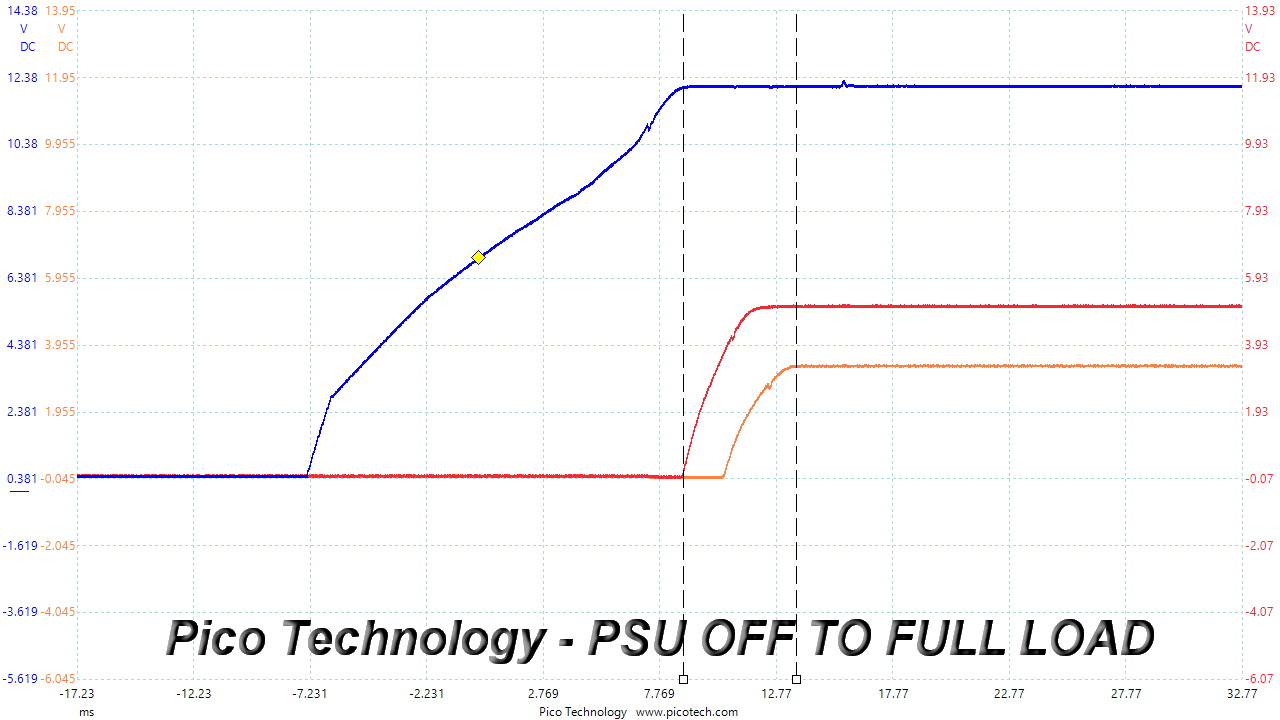
No problems here since the 3.3V rail is always lower than the other two.
Cross Load Tests
To generate the following charts, we set our loaders to auto mode through custom-made software before trying more than 25,000 possible load combinations with the +12V, 5V, and 3.3V rails. The deviations in each of the charts below are calculated by taking the nominal values of the rails (12V, 5V, and 3.3V) as point zero. The ambient temperature during testing was between 30 to 32 degrees Celsius (86 to 89.6 degrees Fahrenheit).
Load Regulation Charts
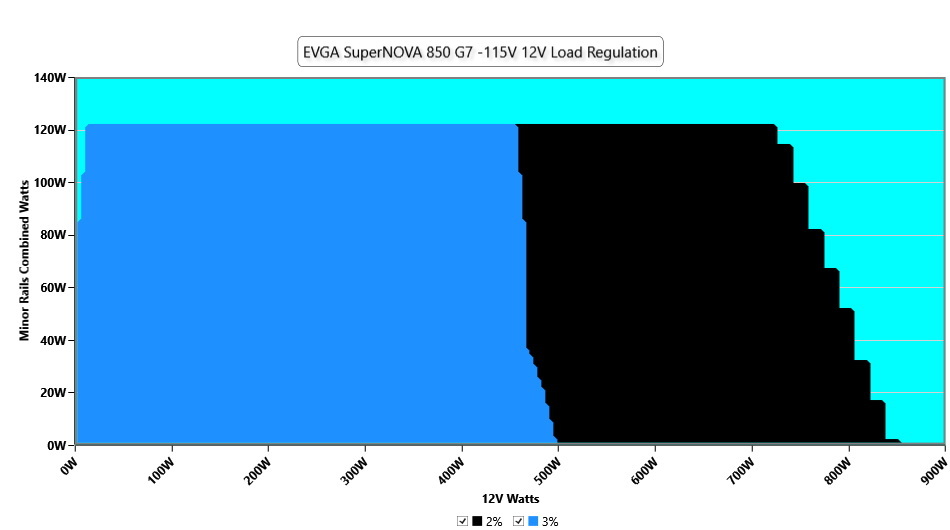



Efficiency Graph
Ripple Graphs
The lower the power supply's ripple, the more stable the system will be and less stress will also be applied to its components.
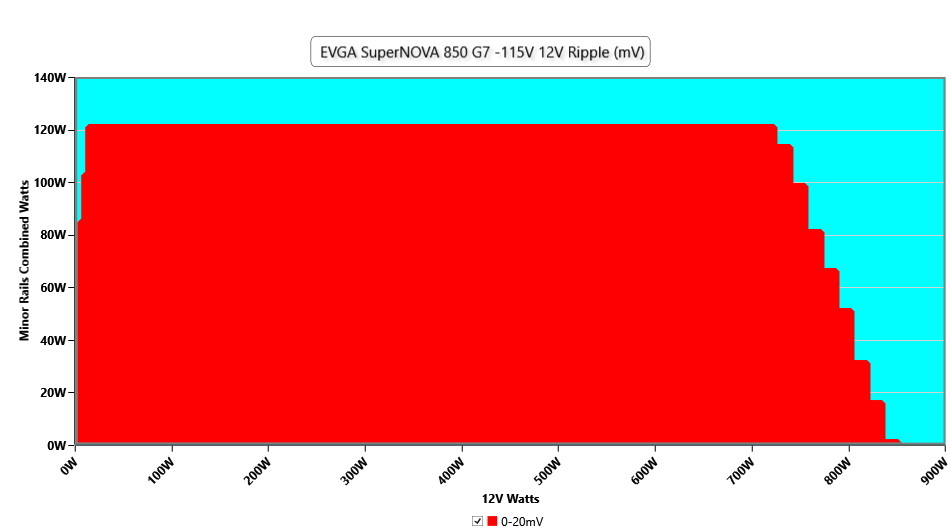
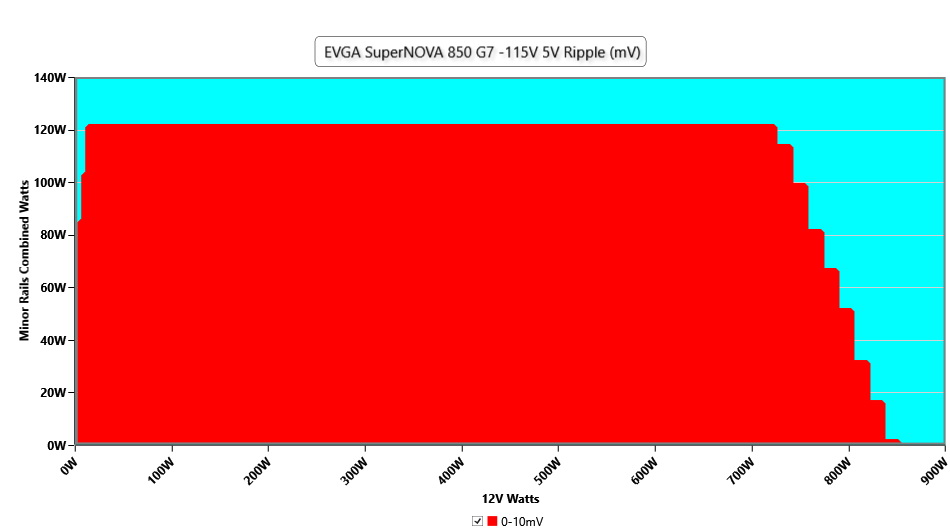

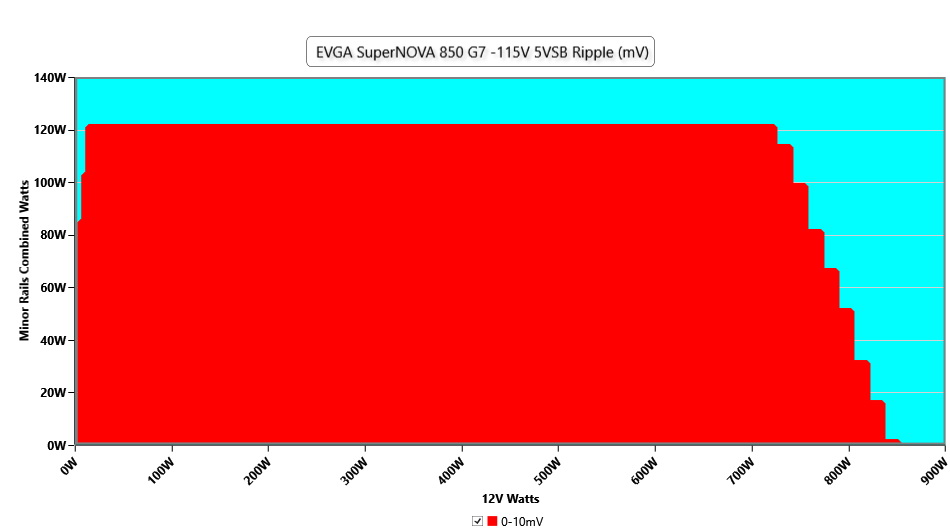
Infrared Images
We apply a half-load for 10 minutes with the PSU's top cover and cooling fan removed before taking photos with a modified Fluke Ti480 PRO camera able to deliver an IR resolution of 640x480 (307,200 pixels).
Get Tom's Hardware's best news and in-depth reviews, straight to your inbox.
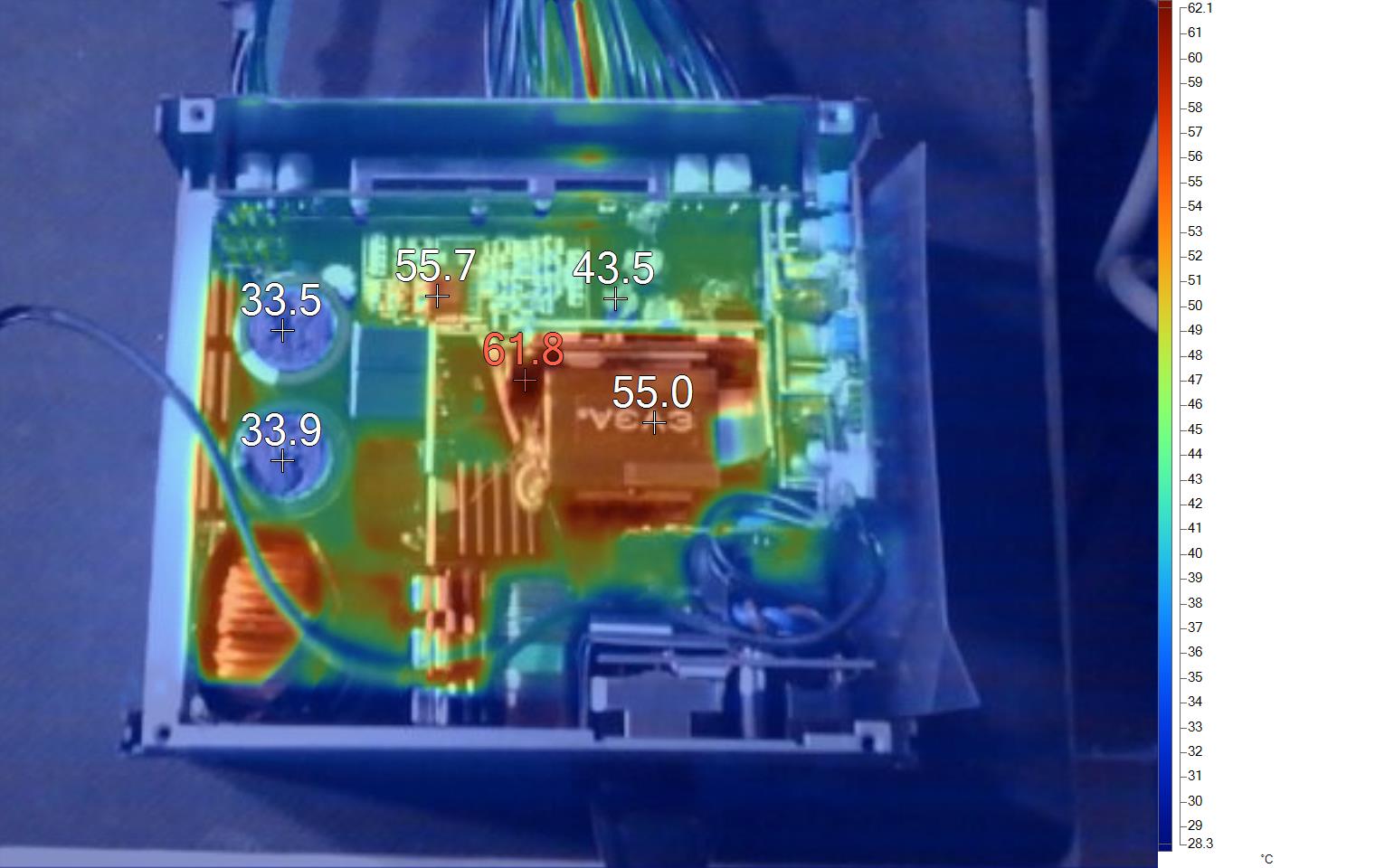
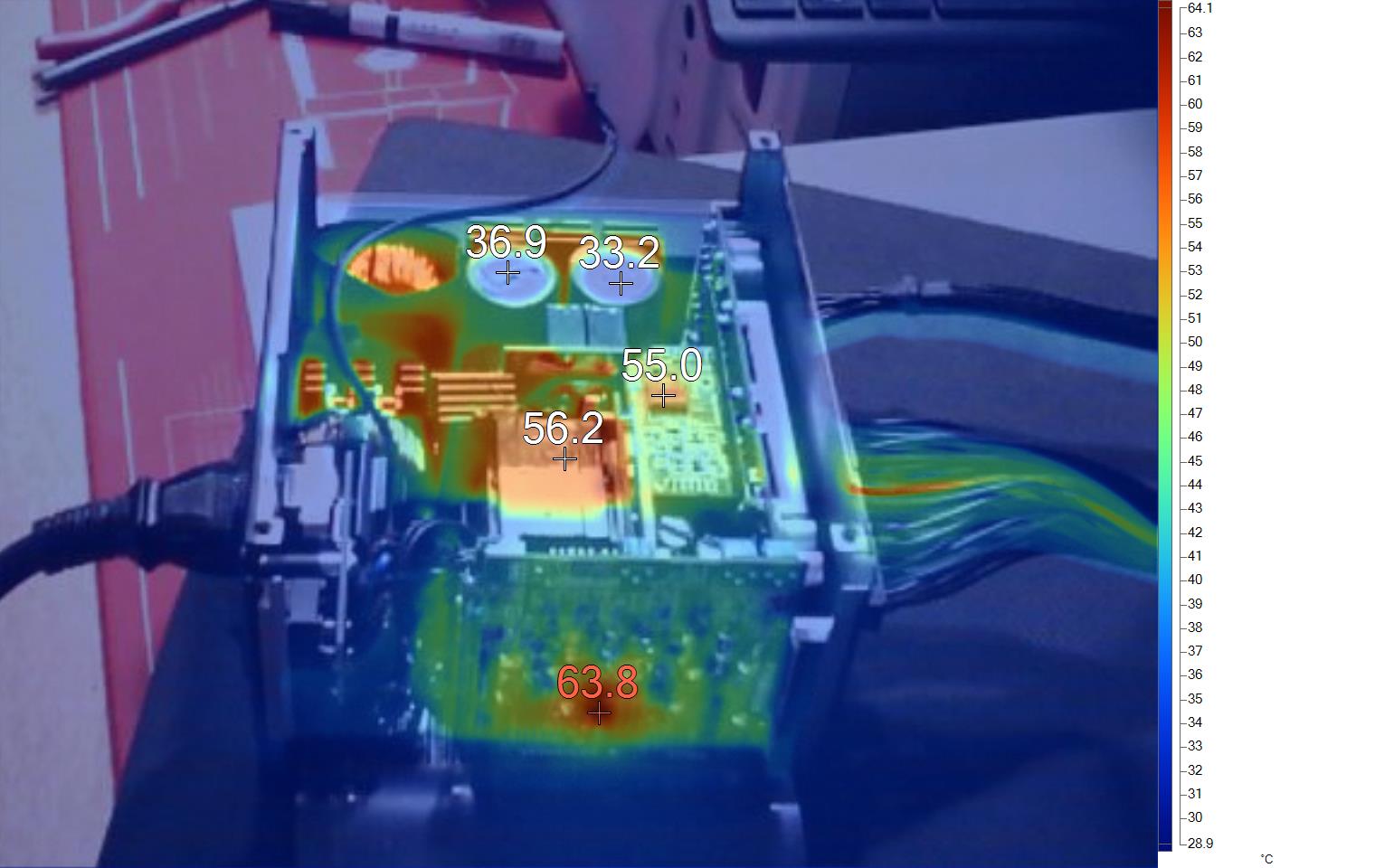

The board holding the 12V FETs is the spot reporting the highest temperatures. Still, we didn't notice alarmingly high temperatures, thanks to the highly efficient platform that minimizes energy losses.
MORE: Best Power Supplies
MORE: How We Test Power Supplies
MORE: All Power Supply Content
Current page: Protection Features, DC Power Sequencing, Cross-Load Tests and Infrared Images
Prev Page Load Regulation, Hold-Up Time, Inrush & Leakage Current, Efficiency and Noise Next Page Transient Response Tests, Timing Tests, Ripple Measurements and EMC Pre-Compliance Testing
Aris Mpitziopoulos is a contributing editor at Tom's Hardware, covering PSUs.
-
Co BIY Thanks for the review!Reply
Glad to see a new leader. EVGA is back in it.
I think a short description of what level of system would be well served/matched to a power supply of this wattage would be a great addition to the review format.
Something along the lines of : A well performing 850 Watt PSU like this one is well suited to power a gaming system up to an i5 12600K (150 watt TDP) with an RTX 3070 Ti GPU (290 Watt). -
